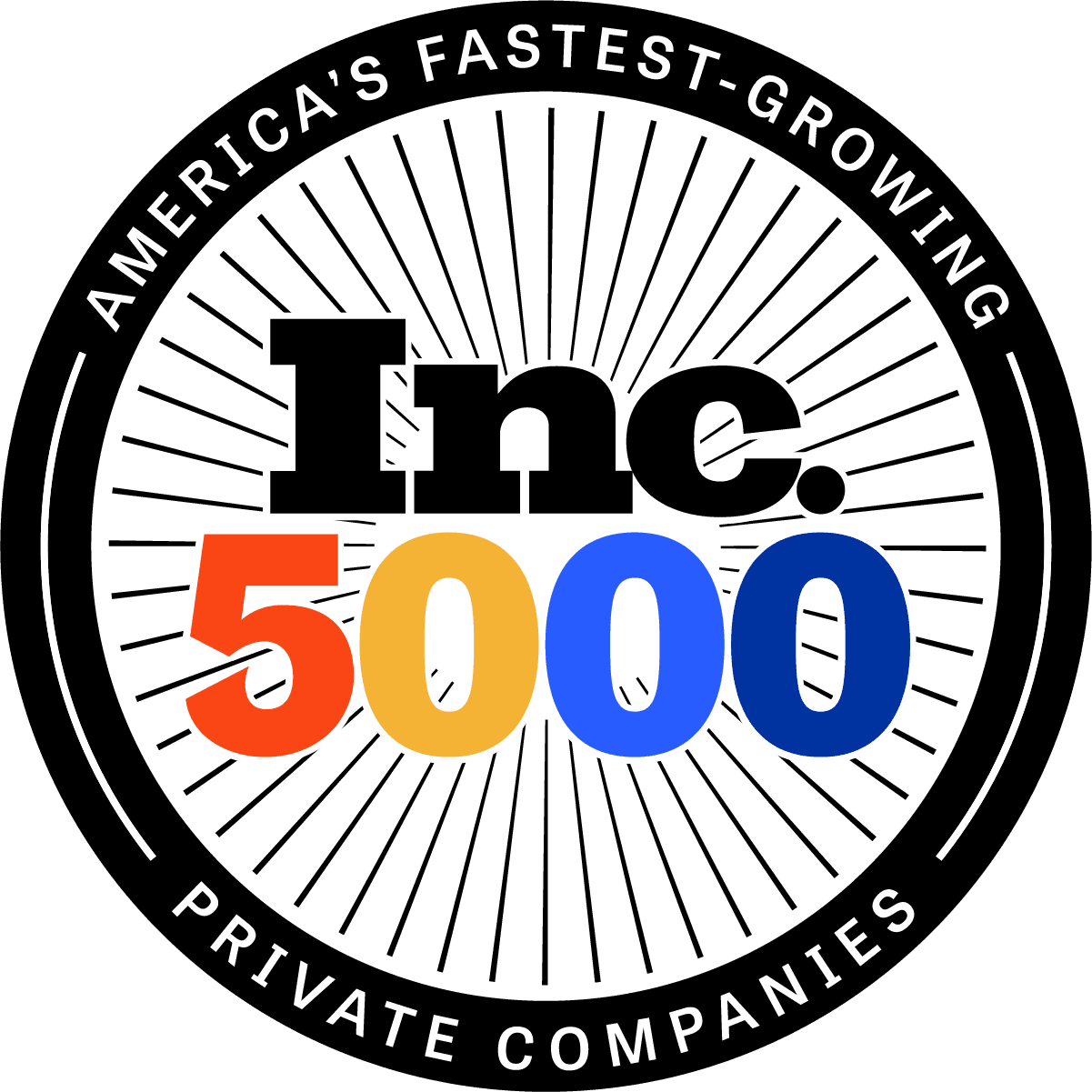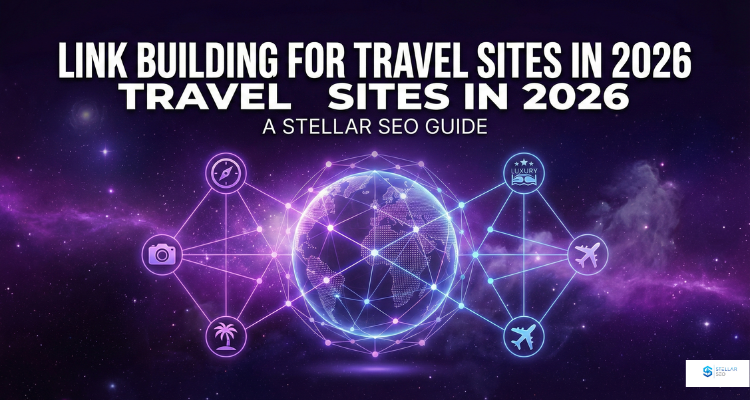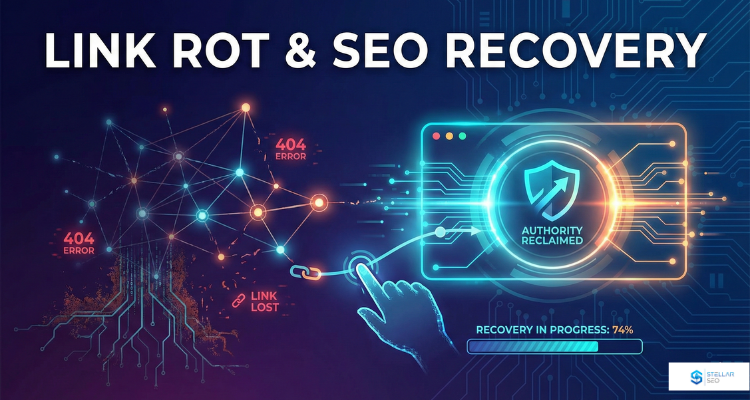Research shows that high-quality backlinks are among the most crucial factors in search engine optimization (SEO), yet 66% of web pages have no backlinks at all. You can outperform your competitors by creating an aggressive link-building strategy that prioritizes quality over quantity. Today, we’ll explore the secret formula for quality backlinks and how you can secure these core ranking signals.
What Are Backlinks and Why Do They Matter Today?
Backlinks are links from other sites pointing back to a page on your site. Google has used backlinks as a ranking factor for its PageRank since 1998. Although the public-facing PageRank toolbar was retired in 2016, documents indicate that Google still uses a form of PageRank in its internal algorithm.
Backlinko reviewed 11.8 million Google search results and found that, on average, the top-ranked website had 3.8 times the backlinks as the #2-ranked site. The diversity of backlinks also matters as part of your SEO strategy, so it’s not enough to build quality backlinks from just one or two sites; you need numerous authoritative websites linking to you.
-
Google’s Evolving Relationship with Backlinks
Google has used backlinks to determine search engine rankings for decades, even patenting its PageRank algorithm in 1998. Initially, the algorithm prioritized building backlinks, regardless of their credibility or quality. The assumption was that if you had dozens of links, you must be creating link-worthy content.
However, Google engineers soon learned that websites were using deceptive means to game the system, such as collaborating with other website owners to generate thousands of links. In 2006, a new patent was issued for the PageRank system, which focused on the distance between a given link and reputable websites, such as The New York Times.
Since then, Google has increasingly focused on generating quality backlinks, with search rankings determined by the number of high-authority sites that link to yours. However, Google has also privatized these internal algorithms, making it harder to manipulate a website’s ranking.
Now, SEO companies and site owners must focus on gaining backlinks naturally through high-quality content and manual outreach. This ensures that search engine results pages provide genuine value to users while rewarding websites that get backlinks through honest means.
-
Backlinks vs. Internal Links vs. Outbound Links
To develop an effective link-building strategy, it is essential to understand the differences between various link types. There are three primary link forms: backlinks, internal links, and outbound links. Each will impact your SEO efforts differently.
Backlinks
These are links from other sites that point back to your content. High-quality backlinks are from relevant websites, business directories, or authority news sites.
Internal Links
Links within your own website are called internal links. For example, you may have blog posts that link back to your homepage or to other relevant posts.
Outbound Links
These are external links on your website that point to other domains, recommending them as a valuable resource to your website visitors.
How to Evaluate the Quality of a Backlink?
Not all backlinks are created equal. To get high-quality backlinks, you have to evaluate their rankings and relevance. These are just some of the metrics you can use to identify the best options.
-
Domain Rating
This rating, developed by Ahrefs, purely focuses on the strength of a website’s backlink profile. If your link prospect has a strong link profile of its own, it will pass some of that link juice to you.
-
Domain Authority
Developed by Moz, Domain Authority (DA) considers a site’s ranking potential based on backlinks. Most importantly, DA compares your link profile to your competitors’ backlink profiles, providing a battle plan for improvement.
-
Traffic
According to Hubspot, 46% of all websites get between 1,001 and 15,000 visits per month. Only 0.5% of websites get more than 10 million visits per month. Getting high-quality backlinks from a site that garners more than 15,000 visits a month can significantly improve both your domain rating and your overall traffic.
-
Relevance
When planning to acquire backlinks, many companies focus on obtaining the highest-quality links without considering their significance. However, Google uses algorithms to assess whether a link feels natural. An excellent link for one site may cause penalties for another site.
-
Anchor Text Context
Anchor text must feel natural and flow within a sentence. Semrush, in its “What Is Anchor Text? An Overview + Best Practices” article, gives examples of artificial linking strategies in which every other word in a sentence links to another page. If you notice this issue on a potential linking partner’s page, steer clear.
-
Toxic Backlinks and Penalties
Search engines analyze your backlink profile not only for quantity, but also for quality. Toxic backlinks originate from spammy, low-quality, or irrelevant websites, and they can negatively impact your search engine rankings. In some cases, they may lead to penalties or delisting.
One of your best defenses against spammy links is Google Search Console. This free tool allows you to review your backlink profile and identify suspicious patterns, then disavow links you believe may harm your rankings.
While the Search Console lets you review your links, it is not explicitly designed to assess toxic links. Semrush’s Backlink Audit tool assigns your profile a Toxicity Score and identifies specific links that may be harmful or malicious so that you can disavow them.
Ahrefs does not provide a spam link score, as the company takes a more nuanced view on toxic backlinks. Specifically, Ahrefs believes that unless a link was purchased or is manipulative, it’s not considered harmful. However, you can use Ahrefs’ free Backlink Checker to identify which links are helping your rankings, which can help you decide whether to remove other links.
-
Manual Actions and Disavow Files
If Google reviewers identify manipulative links, you may face a manual action. A manual action may lower your rank or delist the page entirely, depending on the severity. You will see a warning in your Google Search Console that provides an action plan.
To have the manual action removed, you must address all issues cited in the action, then submit a review request that details the actions you have taken to resolve the problem. This process can take a few weeks, although it may be longer for issues related to links.
13 Proven Tactics to Get Backlinks in 2025
1. Guest Posting on Niche-Relevant Sites
Ask any SEO professional about how to get backlinks, and most will urge you to try guest posting because it establishes your authority and draws higher traffic. To try this method, you will create your own content and host it on another site.
One entertainment site boosted its monthly traffic from 5,000 hits to 25,000 in 12 months by publishing 57 posts on relevant sites. Its Domain Rank went from 25 to 55, putting it in the “good” quality for rankings.
2. The Skyscraper Technique (Updated for 2025)
The Skyscraper Technique was developed by Brian Dean in 2013 and remains a powerful tool because it focuses on creating high-quality content rather than manipulating rankings. To use this method, you identify high-ranking competitor content, improve upon it, and then seek out backlink opportunities from relevant domains.
To illustrate its effectiveness, Brian Dean notes that after implementing this technique on a page, organic search traffic for the entire site doubled in just 14 days. That singular page has gotten over 2 million views since publication.
You can use SEO tools like SEMrush’s competitor analysis tools to find high-ranking pages, review the content, and then improve upon it.
3. Broken Link Building with Automation Tools
Broken backlinks are a golden opportunity simply because they are so prevalent. Ahrefs studied over 2 million websites and found that 74.5% of all links were lost or broken.
To use this method, find resource pages with a large link profile, and then use a backlink checker to identify dead links. Check My Links is a free Chrome extension that analyzes the links on any page and returns a list of broken backlinks. You will then contact the domain owner and offer to fix broken links by replacing them.
4. Digital PR and Journalist Outreach (Post-HARO Era)
Help a Reporter Out (HARO) was shut down in 2024, then relaunched as Connectively before reverting to its former name. However, the confusion about these changes led to it losing its dominant status as the primary source for brand mentions in legacy media.
Now, link builders can utilize tools like ProfNet or Source of Sources (SOS) to identify journalists seeking reputable sources for their articles. Please don’t underestimate the value of this strategy: one company gained one backlink from Forbes and saw their traffic jump from 0 to 145,000 monthly visitors.
5. Link Insertion (Niche Edits)
Niche edits involve inserting a link to your website into an existing article, so you don’t have to create much of your own content; you graft a link onto someone else’s work. You’ll use link prospecting tools like Web Explorer to find high-quality links, then review their content to suggest edits.
The Website Flip achieved a 70% success rate with niche edits, an impressive return on investment.
6. Resource Page Outreach
Resource pages can be a valuable link-building opportunity because they typically attract high traffic. They will also establish you as an authority in your field.
Search Engine Land surveyed SEO professionals and found that this was the 2nd most popular link-building tool, just behind guest posting.
You can use SEO tools like SEMrush’s competitor analysis tools to find what resource pages your competitors are linked to. You can also search for a high-value keyword and add “links” to it to identify these pages. Once you have determined their relevance, please email them to request that your link be added.
7. Podcast Guest Appearances
Search Engine Land researched the ROI of podcast appearances and found that it resulted in a 45% boost in qualified lead conversions.
Ahrefs explains how to get backlinks from podcast appearances: build a list of potential podcasts, vet it, and pitch your appearance by explaining what you bring to the table. This could be industry experience, a unique perspective, or a case study relevant to your niche.
8. Create Linkable Assets (Stats Pages, Calculators, Tools)
Linkable assets are a fantastic way to gain backlinks because they offer immediate value to the user while establishing you as a valuable resource. This can include mortgage calculators, interactive quizzes, statistics pages, and free tools like automatic code checkers.
Search Engine Journal created a linkable asset on the history of Google algorithm updates and attracted almost 3,000 referring domains, boosting its Domain Rating to 91.
9. Publish Original Research and Studies
Original studies offer excellent link-building opportunities because other domains are always eager for content that they can reference or remix. To use this strategy, you will conduct a survey or publish a study based on your niche, such as industry trends or marketing results from a recent test. You’ll perform link outreach to encourage other domains to link back to you.
The animation studio Wyzowl used this strategy and garnered 73 backlinks in a single day by reviewing video marketing.
10. Expert Roundups and Interviews
Being listed as an expert on a panel or being interviewed by news sites is an excellent way to get more links to your site. This helps you align with Google’s E-E-A-T guidelines, which prioritize expertise.
To use this method, search for panel opportunities and pitch yourself as a valuable resource. Ensure that you receive a link on the interview page or promotional materials, and use SEO tools like Search Console to assess how much traffic you’ve received from the mention.
11. Link Reclamation (Unlinked Mentions)
Similar to broken link building, this method involves searching for mentions of your brand and requesting that a link to your site be included. You can use tools like SproutSocial to find mentions, then reach out to request that they include a link to your site.
Another option is to reclaim old links to your site that were removed by reviewing your backlink profile and searching for broken links. Antonio Gabric utilized this method and enjoyed an 18.67% conversion rate, which is exceptionally high.
12. Sponsor or Partner with Events and Organizations
Partnerships align you with well-known brands that already have established domain authority, allowing you to build link equity through the association. You could sponsor an event, partner with another organization, or create a co-branded campaign. The sponsorship or partnership must make sense to search engines, such as both of you being in the same niche. For example, an athletic brand sponsoring a track event would be reasonable, while that same company sponsoring a cooking expo wouldn’t.
In one example, Red Bull and GoPro teamed up to capture footage of the drink company’s extreme sports contests, and Red Bull saw a 7% sales boost.
13. Create Controversial or Opinion-Driven Content
Thought leadership demonstrates your authority while driving clicks from those curious about your opinions. Thrive, a product design firm, focused all its efforts on decisive thought leadership, which led to a 65% increase in traffic and an 88% boost in page-one rankings.
The key here is to have strong opinions based on solid research and avoid clickbait; instead, prioritize bold views that will offer benefit to your readers.
Tools That Help You Build and Monitor Backlinks
Building backlinks doesn’t have to be hard when you have the right tools. Explore these valuable resources to determine which one is right for your team.
Tools for Finding Link Opportunities
Mention features like content explorers, backlink gaps, and competitor audits.
Tools for Outreach and Tracking
Real Backlink Campaign Examples with Results
Brian Dean is well-known for his skyscraper technique, which has consistently delivered outstanding results over the past decade. Using his Skyscraper 2.0 technique, Dean increased his organic traffic by 625% in just seven days while garnering over 200 backlinks. This was achieved by considering user intent and then building content that exactly matched what users wanted to see.
What to Avoid: Black Hat and Outdated Tactics
Google and its users value ethical link-building tactics. Manipulative techniques like link farms, spammy forum or blog comments, and private blogging networks can result in severe penalties, setting you back in the rankings for months or even years.
One of the most well-known examples of this occurred in 2010, when retailer J.C. Penney purchased over 2,000 links specifically for their dress section. This led J.C. Penney to the top of search results for almost every product, but Google soon noticed and penalized the company, causing it to drop to the fifth page of relevant search results. It’s no wonder that CEO Ron Johnson was ousted soon after.
How Long Does It Take to See SEO Results from Backlinks?
Ahrefs polled 3,680 SEO professionals about how long backlinks took to work and found that the majority saw results within 3-6 months, with only 11% seeing results in 1-2 months. Consistency and patience, combined with carefully crafted link outreach strategies, can help you gradually build your authority without incurring penalties.
How to Scale Your Backlink Strategy?
-
Allocate Your Resources Effectively
Decide whether you want to handle link-building in-house, work with a direct agency, or use a white-label link-building service that will handle the work for you.
-
Develop Standard Operating Procedures (SOPs)
Your procedure should include prospecting, vetting, outreach, content creation, and relationship management. This streamlines the process and ensures that nothing is missed.
-
Rely on Specialists
Delegate specific facets of the process to team members. You can also delegate to contractors or third parties, such as using a white-label link-building agency, which will research and deliver the best prospects. Determine which team member is responsible for each element of your process and establish a standard handoff procedure. If you’re looking to expand your operations efficiently, learning how to scale white-label link-building services can help you grow without sacrificing quality or control.
-
Utilize AI Tools
AI can help you harvest thousands of links simultaneously, assess their quality, and extract contact information, enabling you to send emails with minimal effort.
-
Prioritize Relationship Management
Good link-building is not one-and-done, but allows you to gain multiple links from the same source. Use tools like Pitchbox or Hunter.io to manage your publisher relationships and prevent link losses.
Final Thoughts
There is no simple answer to how to get backlinks, as it varies based on your specific niche and goals. However, you should always focus on quality and sustainability, identify high-value targets, and build relationships with authoritative domains.
If you’re having trouble defining your SEO strategy, Stellar SEO is here to help. We offer high-quality backlink services and create custom link-building plans tailored to your company’s unique goals, always employing white-hat tactics to ensure long-term sustainability. Contact us today for a complimentary strategy consultation, or explore our blog to discover how to create a successful link-building plan.
FAQs about Getting Backlinks
-
How do beginners get backlinks fast?
Content marketing is one of the best ways for beginners to create backlinks. Create content that answers specific questions, or ask other site owners if they have guest blogging opportunities available.
-
Are backlinks still important for SEO in 2025?
Yes, link-building is still crucial for search engine rankings. While Google has shut down its public-facing backlink analysis tools, internal documents reveal that sites with more backlinks still tend to rank better.
-
What is a good domain authority to get backlinks from?
High-quality backlinks come from websites with a domain authority (DA) of 50 or higher; anything above 60 is considered excellent. However, you may still benefit from links with lower DA, depending on their relevance to your niche.
-
Is buying backlinks safe or recommended?
No, buying links is considered a black-hat strategy and may result in penalties. You should prioritize building links through content outreach, content development, and networking.
-
How many backlinks do I need to rank?
There is no magic number, as it depends on your niche. Review your top competitors’ backlink profiles to determine how many backlinks they have, and then build a better backlink profile than theirs.
-
Can backlinks hurt my site?
Yes, backlinks can harm your site if they originate from spammy sources, such as private blogging networks (PBNs) or link farms. You should remove or disavow these to avoid hurting your rankings.
-
What are “nofollow” vs. “dofollow” backlinks?
Nofollow links mean that the site has told Google that your link should not be associated with their domain, meaning you will not get link equity from the page. Dofollow links serve as endorsements and can pass link juice, boosting your rank.













